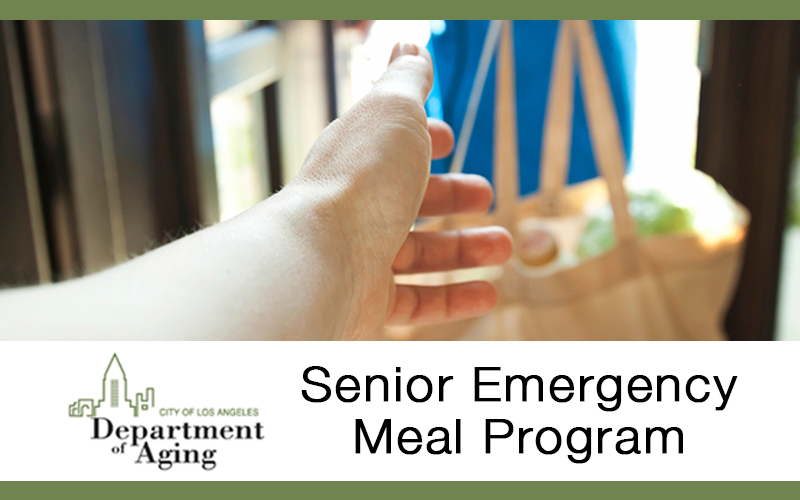Eagle Rock
Hello!
Welcome to Eagle Rock, California
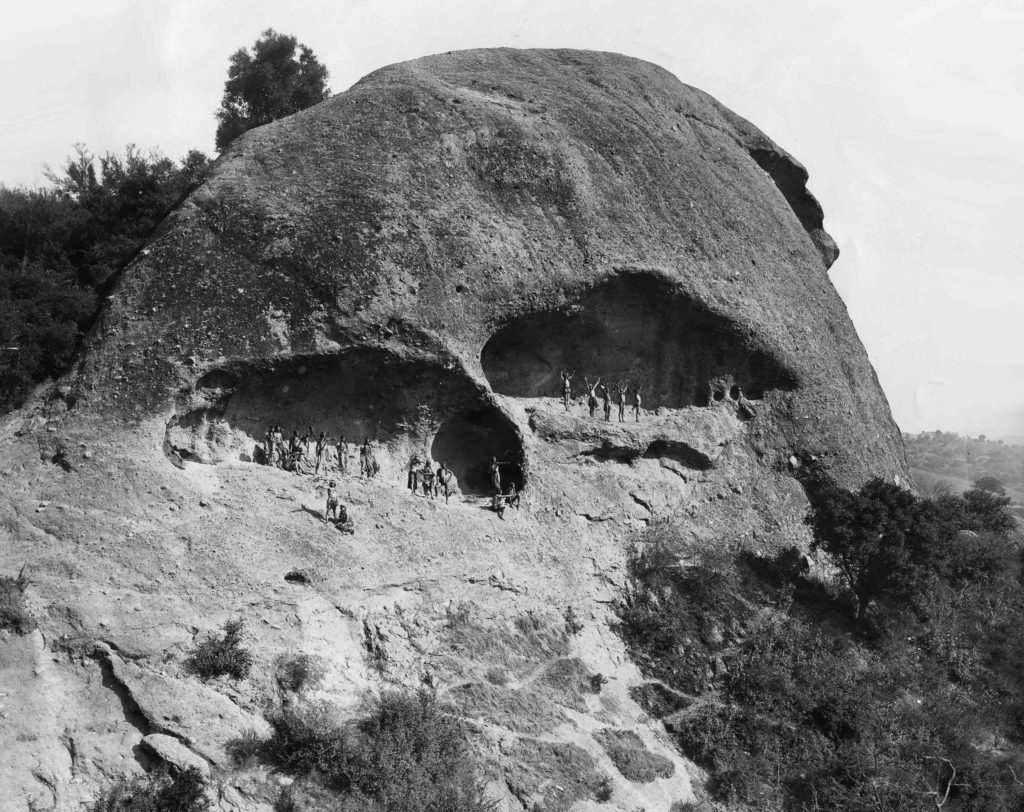
Eagle Rock became more than bucolic ranchland with the arrival of the Los Angeles Railway streetcar system in 1906. The tracks came from downtown Los Angeles along Central Avenue , which is now Eagle Rock Boulevard, and they extended to the intersection of Townsend Avenue and Colorado Street, the heart of town at the time.
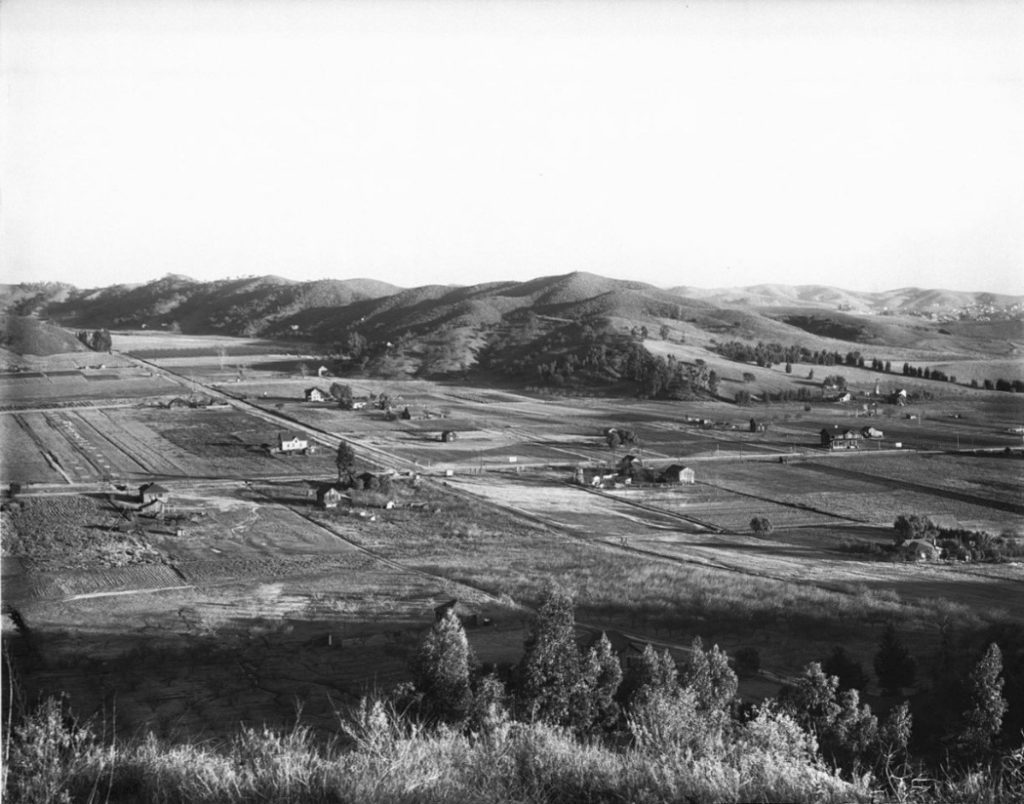
Eagle Rock today is filled with culturally rich neighborhoods and is largely a haven for those working in various creative fields. The town is being discovered by many working in the nearby entertainment industry and other professionals who yearn for a place with a true sense of community and who cherish a slower pace in an ever fleeting society. They long for a town with good schools and involved parents, a feeling of shared appreciation for historic significance, and an older commercial district with the vast potential to develop its own unique appeal.
ITS ALL ABOUT LOCATION
Eagle Rock Real Estate
In 1909, Hill Avenue, now Hill Drive, was (and still is) one of Eagle Rock’s most beautiful streets. Other streets were Roy Drive (now Mt. Royal Dr.), Acacia Street (now Laverna Ave.), Kenilworth Avenue (now Hermosa Ave.), Highland Avenue (now Highland View Ave.), and Fairmont Avenue (now Maywood Ave.). These streets were dotted with large and expensive homes on wide lots.
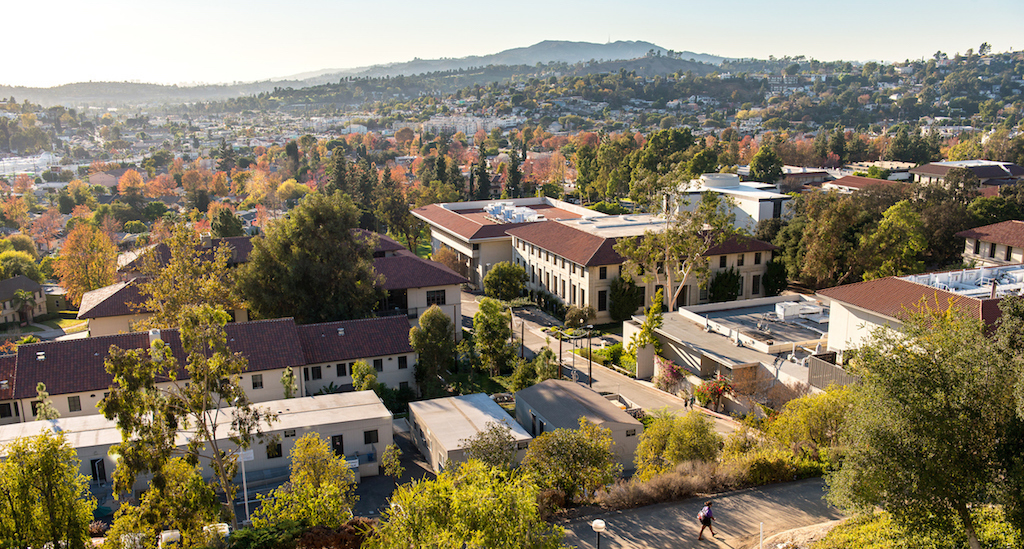
Eagle Rock was incorporated as a city in 1911. Its gentle slopes were dapped with grand Victorian farmhouses, many exquisite Craftsman homes in charming neighborhoods, and Occidental College, designed by Myron Hunt in the Mediterranean revival style and built between 1911 and 1913. The building boom really came between the wars. The 1920’s saw an upswing of subdivision and building of “modern” homes, including many in the Spanish colonial revival style and smaller bungalows modified by such prevalent styles as Colonial revival and English Tudor.
Many other notable structures had come into being in the early part of the century, such as the Craftsman-style Women’s 20th Century Club, the Eagle Rock Carnegie Library, the WCTU home, various lovely churches, and many attractive brick and stucco commercial buildings along the main boulevards. In 1923, not long after the Eagle Rock City Hall was erected, the people of Eagle Rock voted to become part of the City of Los Angeles under the threat of an inadequate water supply and the promise of an upgraded school system. Later decades brought other architectural styles to Eagle Rock homes and commercial structures, like streamline modern, International, post-war traditional, and mid-century modern. Diversity still reigns supreme, and it is this eclectic mix of architectural character among large and small homes that has made Eagle Rock a unique and fascinating place while evoking the qualities of small-town America.
Eagle Rock Community
Eagle Rock is located in Northeast Los Angeles, positioned between Glendale and Pasadena. It is situated close to the 134 and the 210 freeways. Eagle Rock is bordered by Highland Park to the south, Pasadena to the east, Glendale to the west, and Glassell Park to the northwest. (Los Angeles Times Mapping L.A.)
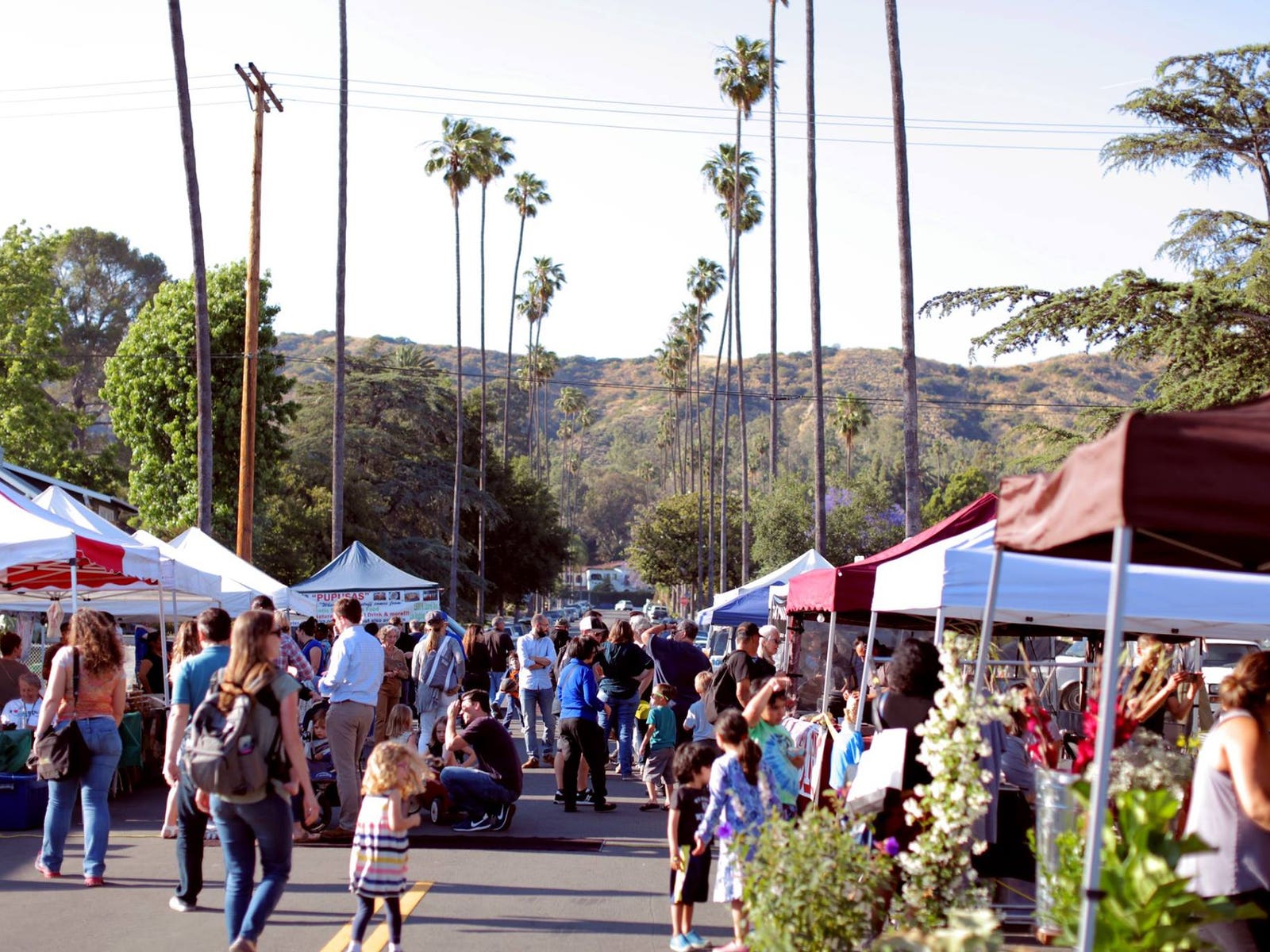
A once sleepy town on the outskirts of downtown Los Angeles, Eagle Rock has still kept its close-knit community with a thriving new bustle of local shops, bars, and an artsy scene. This is Eastside cool without the hipper-than-thou attitude.
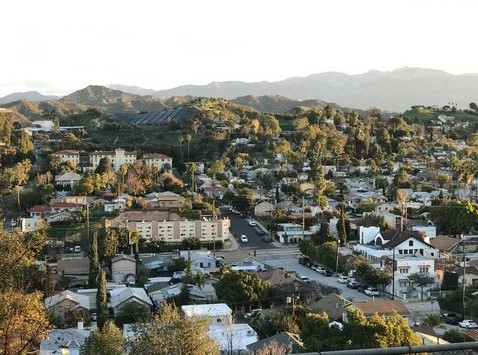
The city of Eagle Rock is bordered by the city of Glendale on the north and west, Highland Park on the southeast, Glassell Park on the southwest, and the cities of Pasadena and South Pasadena on the east. Major thoroughfares include Eagle Rock Boulevard and Colorado Boulevard, with Figueroa Street along the eastern boundary. The Glendale and Ventura freeways run along the district’s western and northern edges.

Viewed from the parking lot, the Eagle Rock Recreation Center is partially obscured by pine trees. But from the front, architect Richard Neutra’s touch is plain to see — sleek horizontal lines, flat, cantilevered roof and retractable walls opening the gymnasium to the outdoors. Sitting just off the 134 Freeway, the center has been serving the community since 1953 with outdoor screenings, Fourth of July fireworks and concerts, youth sports activities and summer camps. Considered by scholars to be one of architect Richard Neutra’s greatest works for its extreme, innovative design in glass, brick and mobile walls, are in talks with the architect’s son, Dion Neutra, who worked with his dad as lead architect on the dramatic design.
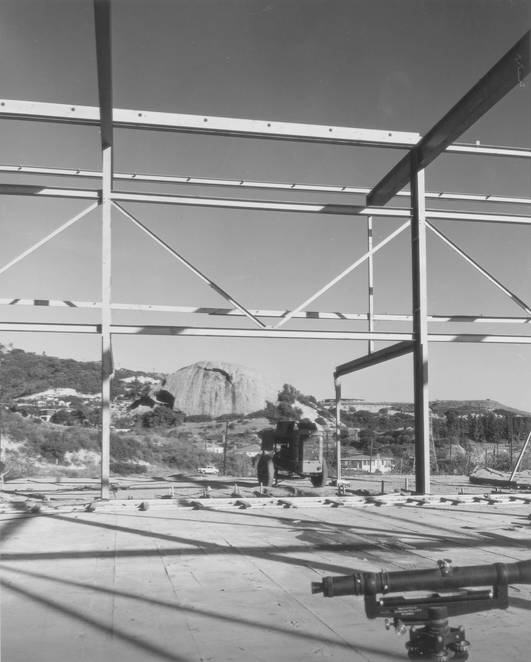
A core of counter-culture writers, artists, and filmmakers has existed in Eagle Rock since the 1920s. The pleasant neighborhood identity remains despite its proximity to the urban bustle just a short drive away.
Schools in and around Eagle Rock from GreatSchools.org
Find your local public or charter school with the LAUSD Resident School Identifier
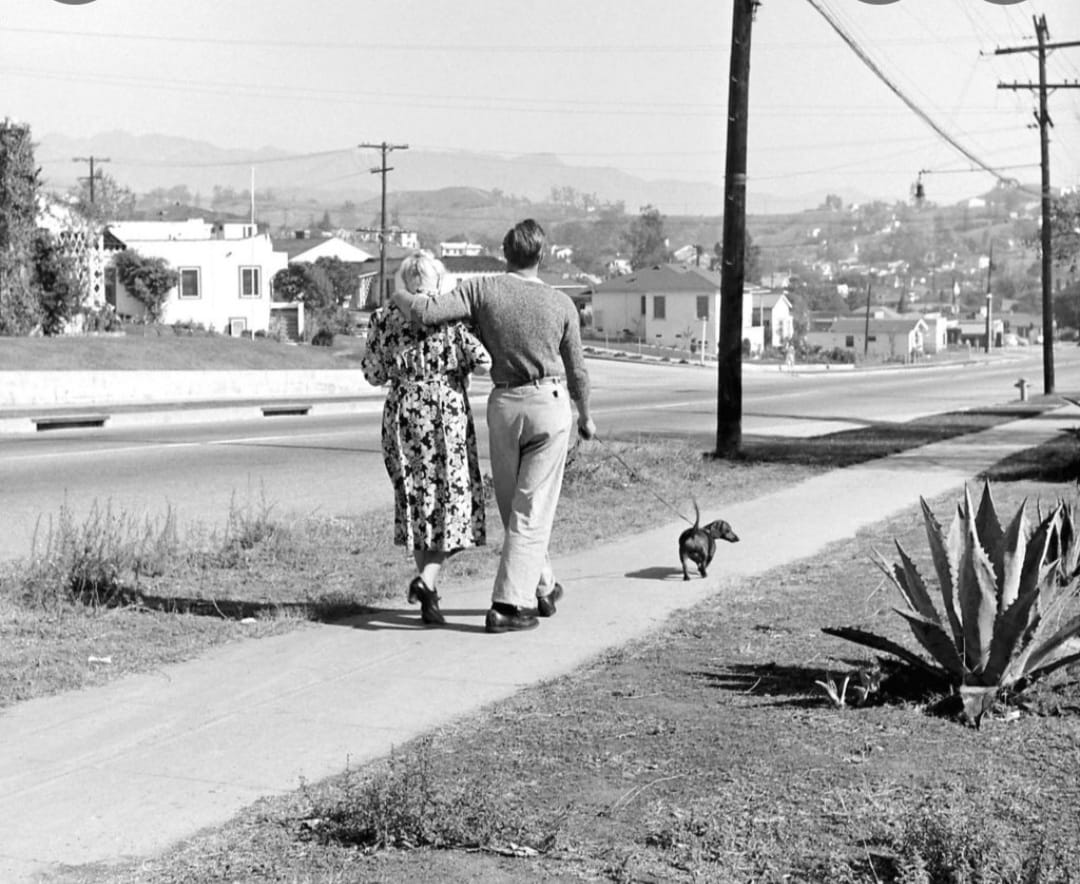
Eagle Rock is extremely walkable and bike-friendly, with relatively wide thoroughfares, and smaller neighborhood streets. The junction of Colorado and Eagle Rock Boulevards could be called the heart of the community, with both corridors stretching out in opposite directions with a variety of commercial and entertainment options. Figueroa Street, on the eastern edge, is another shorter commercial corridor providing a connection to neighboring Highland Park and South Pasadena.
Eagle Rock Art and Shopping
Eagle Rock is sprinkled throughout with mom-and-pop shops – from bakeries to hardware stores. Newer boutiques and specialty shops have been reinvigorating the main boulevards, particularly along Eagle Rock Boulevard and Colorado Boulevard. Whether its contemporary clothes, vintage accessories, used books, or art, the price tags around here tend to be as grounded as the neighborhood.
From hand-crafted jewelry and local art at Cactus Gallery and Gifts to stylish women’s clothing at Haley Solar to a nice bottle of vino at the Vonovore, there’s something for all.
ACORN
ACORN is the collaborative creation of Erin Tanaka and Laura Tanaka, mother and daughter native Angelenos. We are inspired by our great weather, the vibrancy of our city and the rugged landscapes that surround and permeate it. We are excited by the insanely creative artists and designers all around us and by people who make useful and beautiful things that make our lives a little happier. We try to do our part to preserve and conserve our limited resources by considering our impact on the planet and reducing, reusing and recycling as much as possible, while striving to do better.
1611 Colorado Boulevard, Los Angeles, CA 90041
+1 323-474-6297 | acorneaglerock@gmail.com
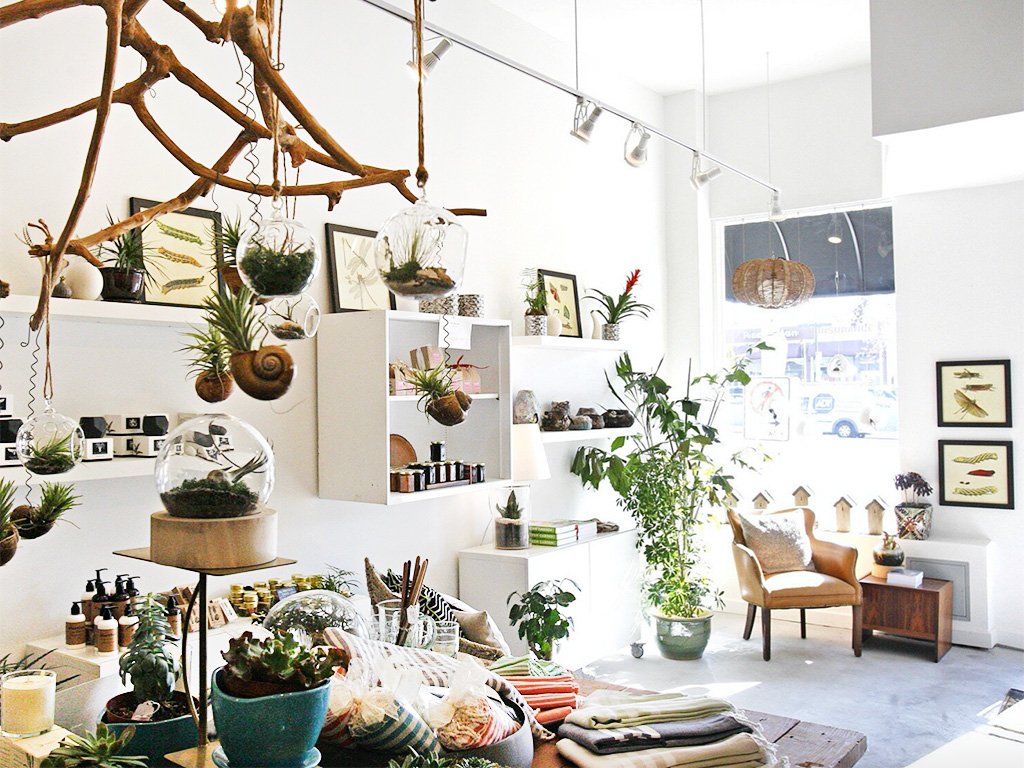
Haley Solar
4606 Eagle Rock Blvd, Los Angeles, CA 90041
+1 323-381-5502
Cactus Gallery
Cactus Gallery is a vibrant Latina owned and operated gallery. Opened in March 2005, our space is an eclectic mix of contemporary art and folk art. The gallery is dedicated to promoting established and emerging artists, while focusing on craftsmanship, accessibility, and artistry. We are especially pleased to work closely with many female artists in the US and internationally.

Vinovore
Vinovore specializes in natural wine, beer, sake, and food items produced by women or women-owned companies in the U. S. and internationally. Owners Coly Den Haan and Angelica Luna wanted a clever way to help shoppers find the wines they were looking for, so they came up with the animal chart—with “vinovore” playing on words like “carnivore” and “herbivore.” “Wine should be fun,” says Den Haan. “And some natural wines are more approachable than conventional wines.” The sommelier, winemaker, and restaurateur behind The Must (2008-2016) and Perch comes from a long line of Los Angeles food and drink specialists, starting with her Italian-immigrant great aunt who ran a Prohibition-era downtown speakeasy.
4627 York Blvd, Los Angeles, CA 90041, USA
+1 323-801-8669 | grr@vino-vore.com
Eagle Rock Eateries & Nightlife
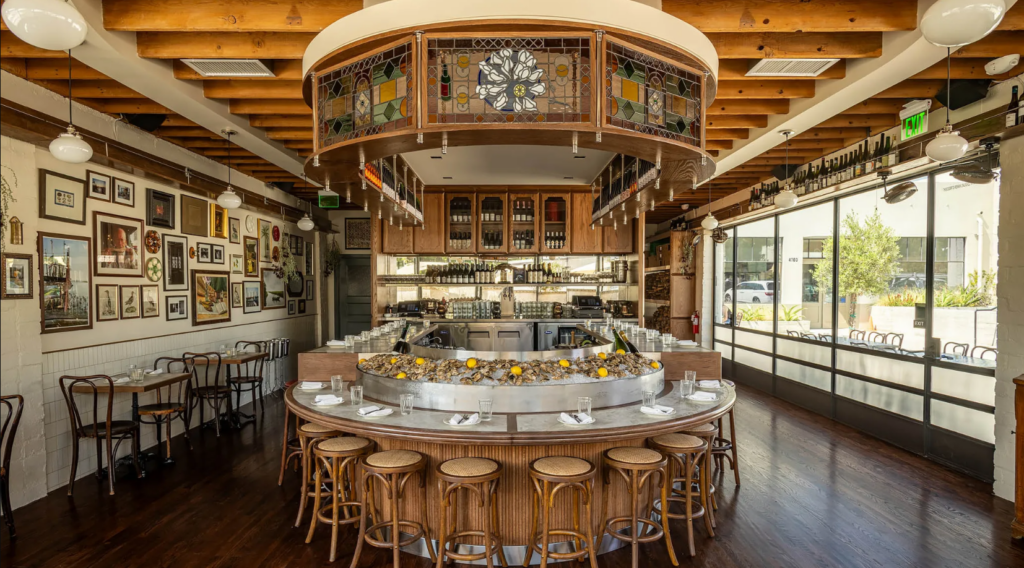
Queen St.
The newest addition to the Eagle Rock culinary scene is Queen St, a raw bar and seafood grill located in a former auto service station from the 1940s. Located on York Boulevard, Queen St honors Charleston, South Carolina with raw and wood-fire grilled seafood starting.
Queen St. is the latest project from Last Word Hospitality, the LA-based restaurant group behind Found Oyster, Barra Santos, and Nossa Caipirinha Bar. The team includes managing director Joe Laraja and executive chef Ari Kolender, whose menu draws inspiration from his childhood and time spent cooking in South Carolina.
4701 York Blvd, Los Angeles, CA 90042, United States
shello@queenstla.com
+1 323-258-1435
Queen St.’s dining room is full of 1940s charm, with antique light fixtures and furniture mixed with contemporary accents. The space, designed by Wick Design and Architecture, features a large horseshoe-shaped bar with 19 seats, plus stained glass panels that depict oyster platters and landscapes from Charleston, South Carolina and a large, eye-catching oyster display as part of the bar.
Joe and Helen Sams opened The Capri in 1963 in the Eagle Rock neighborhood of Los Angeles. They were known for good food at a reasonable price and a nice cozy place to eat. They ran the restaurant for 30 years before handing over the reins to local regulars the Thiels. For years the parents ran the restaurant while their kids enjoyed the hot food and a new experience. In 2006 the sons Jeff and Jim Thiel took over the family business. They put their own spin on the menu and concept while operating the restaurant until 2019, when they decided to retire and focus on their health.
After a major remodel and renovation of the historic space, “Capri Club” was brought back to life once again by restaurant industry veteran Robert Fleming. Paying homage to it’s long and storied past, Capri Club offers a pared down menu of classic Italian Aperitivo fare and cocktails. The food menu was curated by Puglia-native Chef Francesco Allegro and pairs effortlessly with the long list of Amari, refreshing Negronis and classic Martinis.
4701 York Blvd, Los Angeles, CA 90042, United States
shello@queenstla.com
+1 323-258-1435
Live Music | Echo Park
There are plenty of live music events happening every week in Echo Park. Take your pick from music venues like Spaceland (in nearby Silver Lake), The Echo, and Echoplex. They’re all unique and serve up a memorable night on the town.
With more sounds going digital every day, it’s nice to support the local Echo Park vinyl record shops that are popping up around L.A. Along with Vacation Vinyl in Los Feliz, Origami Vinyl is a very welcomed addition to the east side of Los Angeles. Their record selection is impressive with new and hard to find indie rock albums along with some hip-hop, rock, and reissues. They also have live in-store performances that are hard to beat. Drop in and say hello.
The Echo
1822 W Sunset Blvd
Los Angeles, CA 90026
(213) 413-8200
Cypress Park Architecture and Real Estate
Taylor Yard is uniquely connected to the early history of Los Angeles. Home for centuries to the Tongva Indians, it is, by most accounts, where Los Angeles was dubbed “Los Angeles.” It is the site described in the first recorded written words about Los Angeles, the very site where the Portola expedition spent the night August 2, 1769, after crossing he Arroyo Seco. Father Crespi, the expedition’s diarist rhapsodized for more than a thousand words that day about this “green, lush valley,” its “very full flowing, wide river”, the “riot of color” in the hills.
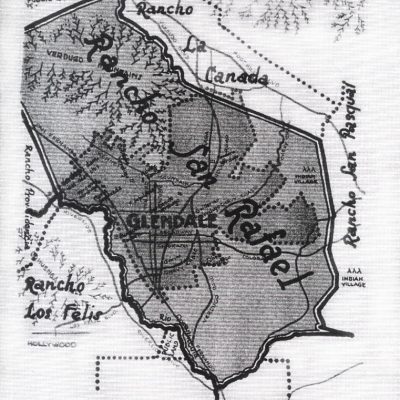
Most of the homes in the Taylor Yard area were not constructed until the housing boom of the 1920’s. They accurately reflect the smaller quaint style and affordability to the local workforce nearby of that era. From Mediterranean, Pueblo, Craftsman, Bungalow and the turn of the century three-story Victorian, and larger estates, well preserved with vast yards. Some of the region has smaller sections of bungalow rows near their transportation lines and unique single-story farmhouse homes with homestead solutions.
Places like Heritage Square Museum explores the settlement and development of Southern California from the late 1800s to early 1900s, offering guests of all ages the ability to explore the everyday lives of Southern Californians during the Victorian era of Los Angeles. With high density and tremendous demand comes great (ADU) accessory dwelling units external from the main residence. These structures have been created to add versatility for the homeowners, from revenue streams and rentals to home offices, libraries, and tranquil meditative spaces. The garages have been converted, the driveways for al fresco dining and native herbs in the driveways and cars get parked out in the streets!
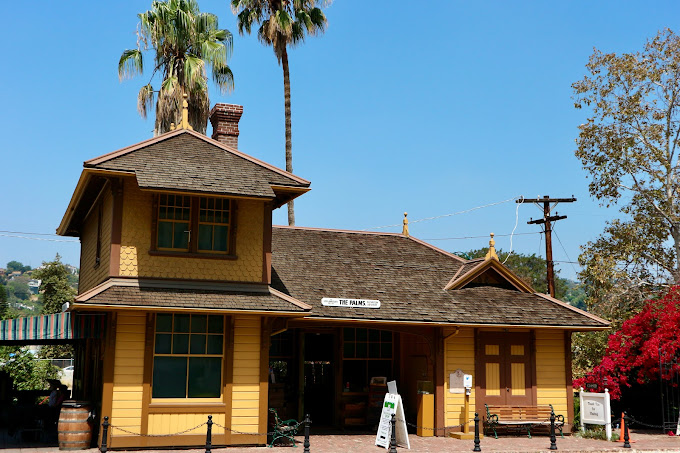
Eagle Rock Historical Fun Facts
Eagle Rock is one of America’s “Hottest Neighborhoods”. Redfin came up with its list of “Hottest Neighborhoods of 2014,” and Eagle Rock almost took the whole American enchilada. And that hasn’t slowed down a bit.
Notable residents have included actor Marlon Brando who married Anna Kashfi in Eagle Rock, October 11, 1957 at the home of his grandmother, Bessie Pennebaker, and his aunt and uncle, Betty and Ollie Lindemeyer. He was preparing for his movie debut in The Men, the wrenching story of a paralyzed World War II vet coping with rage and insecurity.
John Steinbeck who first came to town in 1925, a 23-year-old college dropout struggling for a writing career. His first residence in 1930 was described by the Historical Society as “”a small barn that had been abandoned as hopeless after having been hit by a cyclone, with holes in the walls, ceiling and floor, with broken windows, inadequate plumbing and ankle deep in dirt and filth,”. In Eagle Rock he published “To a God Unknown.” and stated ; “We do not suffer. Indeed we enjoy it,” Steinbeck wrote about the home. “It is much better than living in a city.”
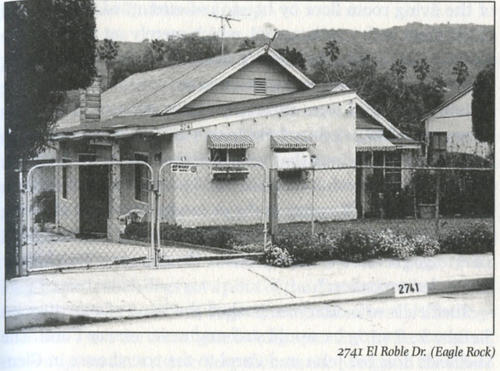
He later returned in 1932 and stated; “Remember the days when we were all living in Eagle Rock?” he later wrote. “As starved and happy a group as ever robbed an orange grove. I can still remember the dinners of hamburgers and stolen avocados.”
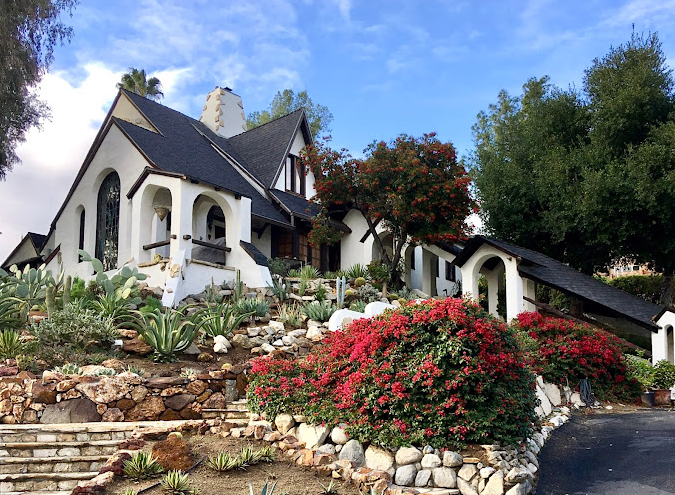
Created by French architect Jean-Louis Egasse and owners Albert and Constance Braasch, the trio collaborated to build this storybook-style house in 1923 in Eagle Rock, California. In the design and construction, they let their imaginations run wild, taking inspiration from both French and Nordic architectural traditions. Some of the more eccentric flourishes they added include an 11-foot-tall stain glass window; tons of rough-carved woodwork; a “Norman village” outdoor balcony; a wall-ceiling-wall relief mural featuring seagulls, built-in floral wall sconces and Viking ships; and odd, asymmetrical entrance arches.
In 1961 Barack Obama attended Occidental College for the first two years before transferring to Columbia University. He went on to become the 44th President of the United States (taking office January 20, 2009)
In 1962, the Eagle Rock was declared as Los Angeles Historic Cultural Monument #10.
In the summer of 1995 the “Eagle Rock” became officially the property of the city of Los Angeles.The city agreed to pay nearly $700,000 to a developer who had plans to build an apartment complex at the foot of the Eagle Rock. Now the hunk of rock and the land around it is administered by the city’s Department of Recreation and Parks.
Is Eagle Rock Safe?
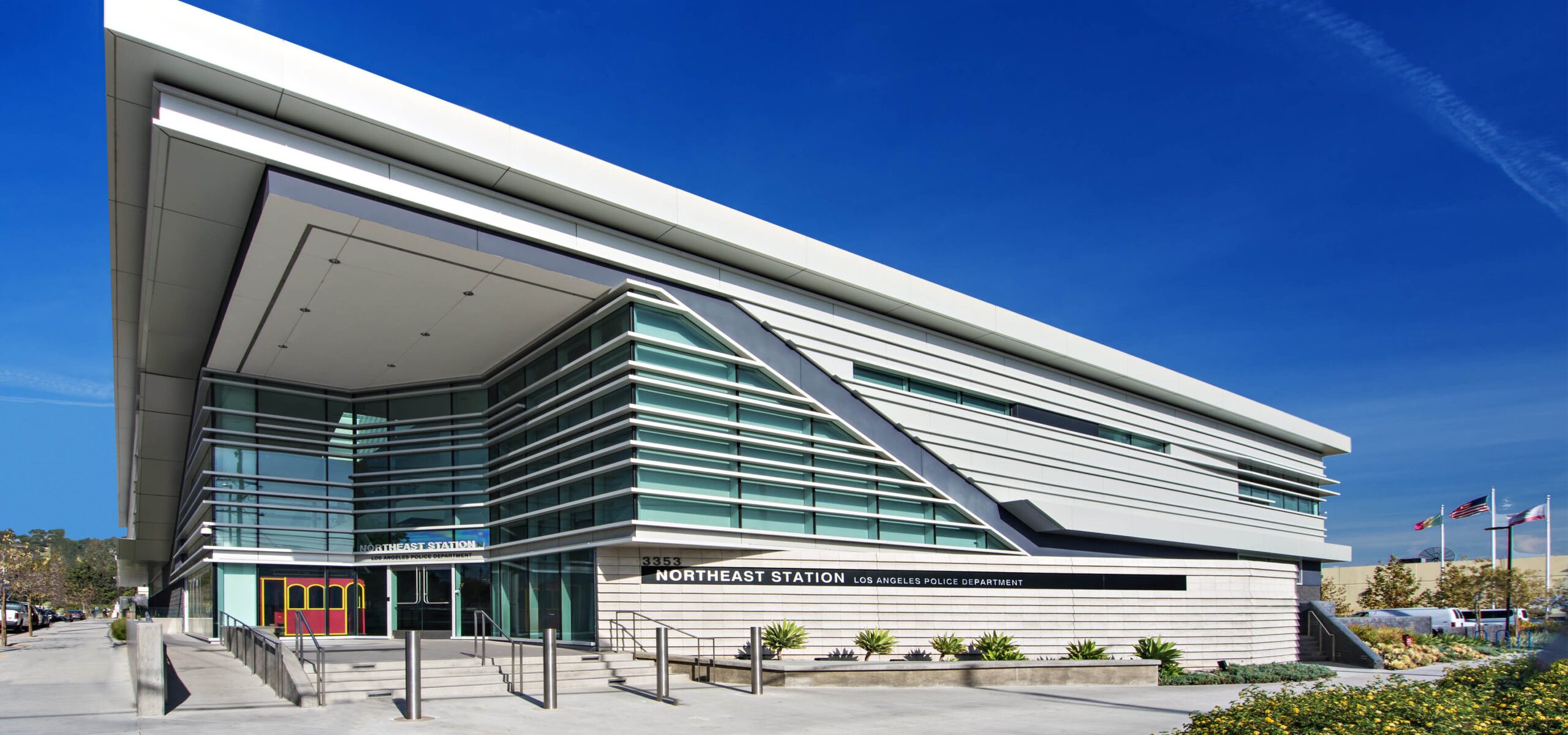
Every metropolitan city with high density carries with it the increase for crime based on the increased population sample. As a whole Cypress Park is safe and here are the numbers!
Crime Rates in Eagle Rock
Eagle Rock in terms of crime rate in Los Angeles is one of the safest cities to live in with only 344 total crimes being committed to every 100,000, according to The University of Southern California’s Crosstown project whose data comes from the two largest agencies, the Los Angeles Police Department and the Los Angeles County Sheriff’s Department.
Every metropolitan city with high density carries with it the increase for crime based on the increased population sample.” We, humans, have a hard time comparing things unless we are assisted. And when we don’t have that assistance, we can go to extremes. What is the typical experience? What are the extremes? Of the 88 cities in Los Angeles County 52 of the LA neighborhood’s have a property crime rate between 16-25 people per 1000 residents. The lowest being 9 and the highest being 167. Only 12 of the 88 cities in Los Angeles County have a violent crime rate of 11-15 people per 1000 residents. The lowest being 1 and the highest being 45.
Crime Statistics and Types in Eagle Rock
For a more comprehensive look take a look at the Los Angeles Police Department Crime Mapping site. You can get up-to-date crime statistics for neighborhoods throughout Los Angeles. There were 10 accounts of burglary theft in August and 9 assaults with no homicides.
Homeless Population in Eagle Rock
According to the Los Angeles Homeless Services Authority LAHSA as of 2022 114 individuals constituted the entire homeless population of Eagle Rock’s 34,466 population in 2008.
In the Service Planning Area Metro 4 where Eagle Rock resides there were 114 individuals that were homeless and or in vehicles based on the data collected from Los Angeles Homeless Services Authority in 2022. Other major areas such as South L.A (SPA 6) has 14,598 the San Fernando Valley (SPA 2) 9,829 and the lowest region is the Antelope Valley with 4,598. The range falls between the highest being the South Los Angeles Service Area at 1.38% and the lowest being the San Gabriel Valley at .28%. Echo Park / Service Planning area 4 is at 1.23%.
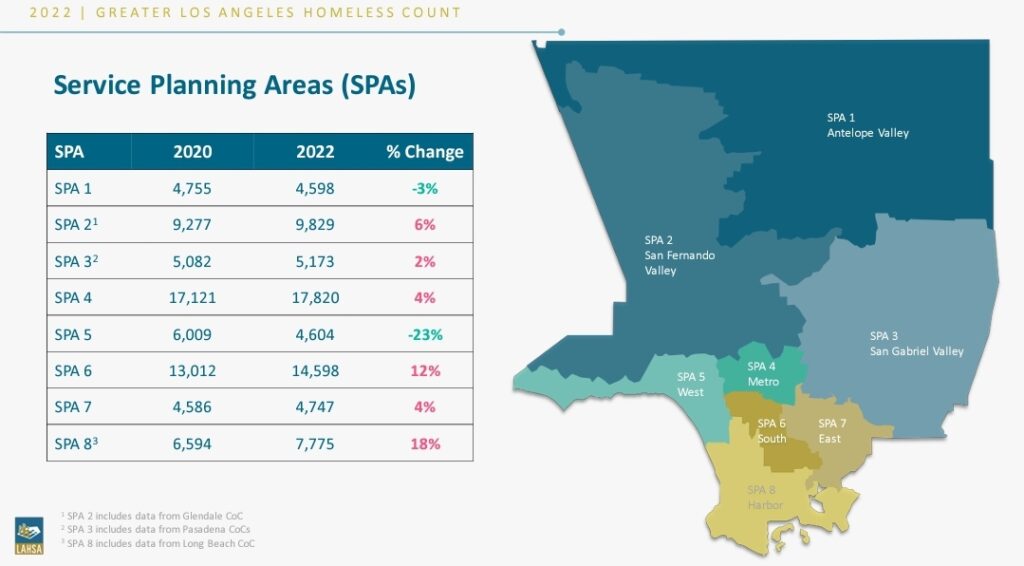
Homelessness and Housing Challenges
It’s impossible to discuss crime in Los Angeles without considering the city’s massive unhoused population, which by some measurements is the largest in the nation.
The greater Los Angeles homeless Service Planning Areas (SPA’s) are broken up between eight different regions each with unique challenges to address compassionately and effectively based on the numbers of human beings that they serve. Rehousing L.A is at the forefront of active solutions leading to change. The people on the frontlines of Rehousing L.A’s rehousing system made more than 84,000 housing placements in the past five years. L.A. County is increasing coordination among mainstream systems–foster care, hospitals, jails and prisons–to better prevent homelessness. The focus being on emergency shelter to better rehouse people long term. This fall, we will roll out shared success measures and goals to hold our rehousing system accountable and increase coordination. Our 88 city governments must focus on increasing affordable housing. Each year, more than 21,000 people get rehoused, but more than 80,000 people become homeless. L.A County has increased prevention efforts in our mainstream systems and increasing affordable housing. Since COVID-19, health authorities recommended against moving encampments, resulting in 17% more visible tents, vehicles, and makeshift shelters–with fewer people in them. Since the count, there’s been a record number of actions to help move people inside. (LAHSA)
Neighborhood Council and Community Engagement
The Echo Park Neighborhood Council is a publicly funded and elected group of individuals who live, work, own property, or otherwise have a connection to Echo Park. They address issues and engage in initiatives affecting the neighborhood as a whole, as well as in each of its six districts. The EPNC connects residents on a local level with their city government and aims to address issues of safety, development, and quality of life with those who live and work around us.
The Echo Park Neighborhood Council’s Homelessness & Housing Committee (HHC) mission statement is “The EPNC Homelessness & Housing Committee seeks to implement ideas that will benefit our unhoused residents. HHC strives to connect those experiencing homelessness or housing insecurity to resources and to advocate for the effective use of government programs to help address our housing crisis.” They have board members and meet the 1st Tuesday of the month at 7pm.
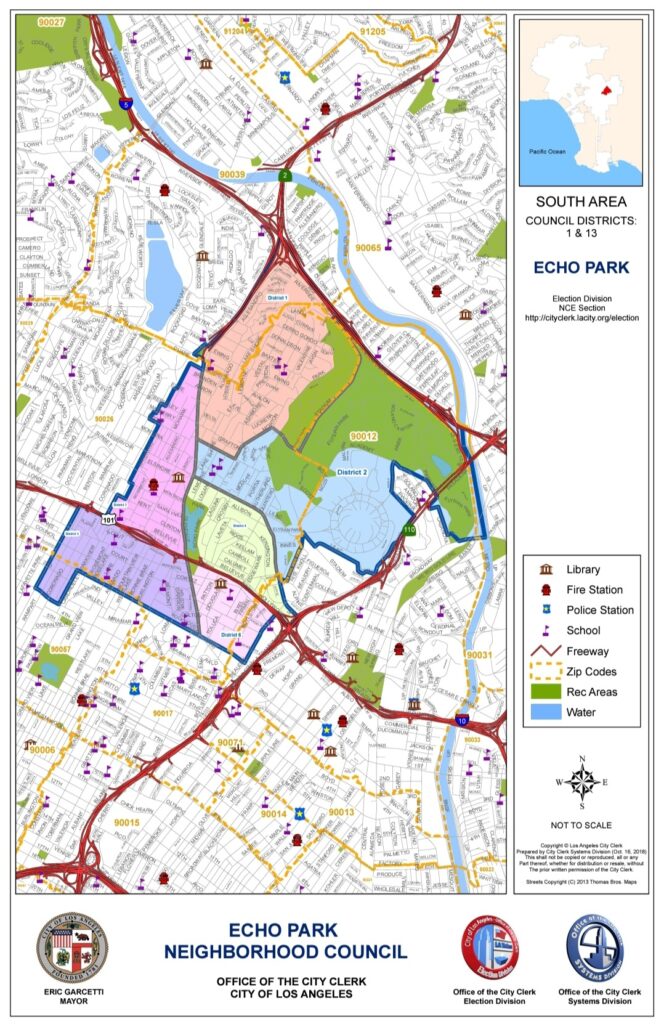
Neighborhood Watch and Crime Prevention
To keep an eye on things in your neighborhood the more modern neighborhood watch is Crime Stoppers. This site is where you can submit a tip, follow up, and collect a cash reward! “The purpose of Los Angeles Regional Crime Stoppers is to prevent and reduce crime, by forming a partnership among the community, law enforcement and the media to offer anonymity and cash rewards to anyone providing information leading to an arrest. Crime Stoppers encourages members of the community to assist local law enforcement agencies in the fight against crime by overcoming the two key elements that inhibit community involvement: fear and apathy.” (Crime Stoppers)
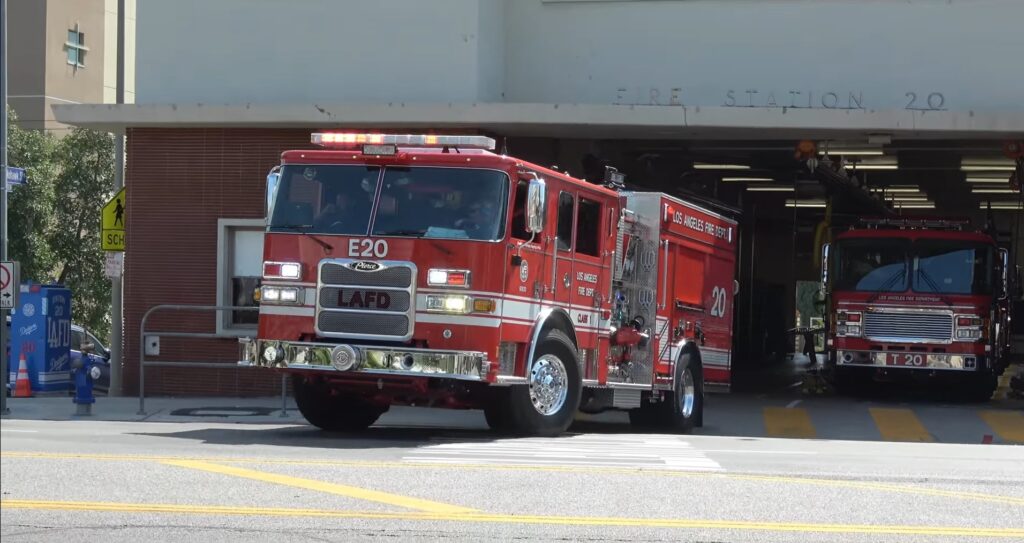
Your Next Chapter Starts Here
Senior Guide
Our golden years bring lots of changes.
It’s important to consider the people you invite to be on your support team. Part of that team is a Senior Real Estate Specialist® (SRES®) by your side.
Local Resources:
Northeast Community Police Station – Eagle Rock
- Phone (Voice): 323-561-3211
- Phone (TTY): 877-275-5273
- Address: 3353 San Fernando Rd., Los Angeles, CA 90065
Los Angeles Fire Department Station 42 Eagle Rock
- Phone: 213-485-6220
- Address: 2144 W. Sunset Blvd., Los Angeles, CA 90026
Eagle Rock Neighborhood Council
- Email: info@eaglerocknc.com
- Mailing Address: 1226 N. Alvarado, Los Angeles, CA 90026
Health Services of Los Angeles County
- Phone: 211
- Services: Primary care, emergency services for insured, uninsured, low-income, no income
211 County Help Line
- For emergency food/shelter, dial 211 and choose option 3
Emergency Senior Meals Response
- Phone: 213-202-5669
- Services: Meals for seniors 60+
Los Angeles County Domestic Violence Safety Plan Hotline
- Phone: 800-799-7233
THE SHELHAMER GROUP | DRE: 01950995
Glenn Shelhamer is a licensed real estate broker DRE: 01950995 in the state of California and abides by equal housing opportunity laws. All material presented herein is intended for informational purposes only. Information is compiled from sources deemed reliable but subject to errors, omissions, changes in price, condition, sale, or withdrawal without notice. To reach The Shelhamer Real Estate Group’s office manage please call (310) 913-9477.
© 2023 Shelhamer Group. All rights reserved.

